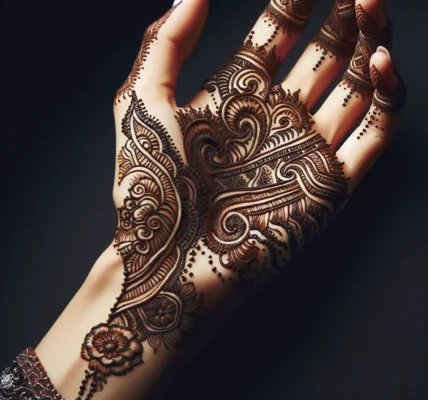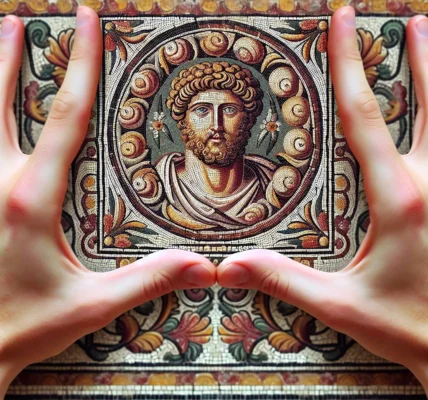The Origins of Ornamental Design
The origins of ornamental design can be traced back to the earliest human civilizations, where decorative motifs were used to adorn everyday objects and religious artifacts. The ancient Sumerians, Egyptians, and Chinese all incorporated ornamental elements into their architecture, textiles, and ceramics. These early designs often featured motifs inspired by the natural world, such as plants, animals, and geometric patterns.
As societies evolved, so too did the ornamental design, with each culture developing its own unique styles and techniques. For example, the Greeks favored intricate patterns and motifs derived from mythology, while Roman designs often showcased ornate embellishments and intricately carved stone structures.
During the Middle Ages, ornamental design became closely intertwined with religious art, with elaborate decorations adorning cathedrals, manuscripts, and religious relics. The Islamic world also made significant contributions to ornamental design, with intricate geometric patterns and calligraphic elements becoming hallmarks of Islamic art and architecture.
With the dawn of the Renaissance, ornamental design experienced a revival, drawing inspiration from classical antiquity and placing a greater emphasis on symmetry and proportion. This era marked the beginning of a more systematic approach to ornamental design, with artists and architects meticulously studying and replicating the designs of ancient civilizations.
Overall, the origins of ornamental design are deeply rooted in the creative expression of early human societies, evolving over time to reflect cultural, religious, and artistic influences. This rich history continues to inspire contemporary designers, who often look to the past for inspiration while putting their own modern twist on ornamental motifs and patterns.
Evolution of Ornamental Patterns
The history of ornamental design is a rich tapestry of cultural influences and artistic evolution. One of the most fascinating aspects of this history is the evolution of ornamental patterns, which have been shaped by the aesthetic sensibilities and technological advancements of different time periods and societies.
Early ornamental designs, such as those found in ancient Mesopotamia and Egypt, often featured geometric shapes and patterns inspired by nature. These motifs were handcrafted with meticulous detail, reflecting the artistic skills and cultural symbolism of the era. As civilizations grew and expanded, ornamental patterns began to incorporate more intricate designs, influenced by trade and cultural exchanges.
During the Renaissance, ornamental patterns experienced a revival as artists and artisans drew inspiration from classical motifs and architectural forms. This period saw the emergence of elaborate scrollwork, arabesques, and floral motifs that adorned everything from tapestries to furniture. The burgeoning Asian trade also introduced new ornamental patterns, such as the iconic chinoiserie and intricate Japanese motifs, which captivated the imaginations of European designers.
The Industrial Revolution brought about significant changes in ornamental design, with the advent of mass production leading to the proliferation of ornamental patterns in textiles, wallpapers, and household goods. This era witnessed a fusion of historic ornamental motifs with modern industrial techniques, resulting in a diverse array of styles, from ornate Victorian patterns to the sleek, abstract designs of the Art Deco movement.
Today, the evolution of ornamental patterns continues to be influenced by global trends, digital technologies, and a resurgence of interest in traditional craftsmanship. Modern designers are reinterpreting historic ornamental motifs in innovative ways, creating a dynamic tapestry of ornamental design that reflects the ever-changing landscape of art and culture.
Influence of Cultures on Ornamental Design
Throughout history, ornamental design has been greatly influenced by different cultures, contributing to the rich tapestry of decorative art. The influence of cultures on ornamental design can be seen in the motifs, patterns, and materials used in various art forms. From ancient civilizations to modern societies, each culture has made a unique impact on the development of ornamental design.
Ancient Egyptian ornamental design, for example, featured intricate hieroglyphs, animal motifs, and geometric patterns, reflecting the importance of religion and the natural world in Egyptian society. Similarly, the Greeks and Romans incorporated ornate floral and mythological motifs into their art and architecture, demonstrating their reverence for beauty and storytelling.
As trade routes expanded and civilizations interacted, ornamental design began to reflect cross-cultural influences. The Silk Road, for instance, facilitated the exchange of artistic ideas and motifs between the East and the West, leading to the incorporation of intricate Chinese patterns and motifs into European ornamental design.
During the Islamic Golden Age, stunning geometric patterns, intricate arabesques, and floral motifs adorned architecture, textiles, and manuscripts, showcasing the significance of mathematics, nature, and religion in Islamic culture. Furthermore, the vibrant and complex designs of Mughal art in India left a lasting impact on ornamental design, influencing textiles, jewelry, and architectural embellishments.
In more recent history, the exploration of African, Asian, and Indigenous American art and culture has brought a newfound appreciation for the diverse and vibrant ornamental traditions of these cultures. From the bold colors and geometric patterns of African textiles to the intricate symbolism of Native American beadwork, these traditions have significantly enriched the global landscape of ornamental design.
Today, the fusion of diverse cultural influences continues to shape ornamental design, with artists and designers drawing inspiration from traditions around the world to create innovative and inclusive decorative art. The history of ornamental design stands as a testament to the enduring impact of cultural exchange and the boundless creativity of human expression.
Ornamental Design in Architecture
Ornamental design has played a significant role in the history of architecture, adding aesthetic value and cultural significance to buildings across the world. The incorporation of ornamental design in architecture dates back to ancient civilizations, where intricate patterns, motifs, and decorative elements were used to adorn structures, reflecting the artistic and cultural identity of the society.
One of the earliest examples of ornamental design in architecture can be traced back to the ancient Mesopotamian and Egyptian civilizations. These cultures utilized ornamental motifs such as geometric patterns, floral designs, and symbolic representations in the construction of temples, palaces, and tombs. These ornamental elements not only served as decorative features but also held religious and spiritual meanings, emphasizing the connection between architecture, art, and belief systems.
Throughout history, ornamental design in architecture continued to evolve, taking on diverse forms in different periods and regions. The intricate stone carvings of Gothic cathedrals, the elegant arabesque patterns of Islamic architecture, and the opulent decorations of Baroque palaces are just a few examples of how ornamental design became intricately intertwined with architectural styles and movements.
During the Renaissance, architects and designers drew inspiration from classical antiquity, reviving the use of ornamental elements such as acanthus leaves, scrollwork, and mythological motifs. This revival of classical ornamentation not only embellished the facades and interiors of buildings but also reflected the humanist ideals and artistic revival of the era.
In the modern era, the approach to ornamental design in architecture has been diversified, with some architects embracing minimalist aesthetics while others continue to explore new forms of ornamentation through innovative materials and technologies. Despite these shifts, the legacy of ornamental design in architecture continues to be a source of inspiration, connecting contemporary designs to the rich history of decorative arts and architectural expression.
As architectural trends and design preferences continue to evolve, the incorporation of ornamental design remains a dynamic and integral aspect of architectural expression, showcasing the enduring allure and cultural significance of decorative elements in the built environment.
Contemporary Trends in Ornamental Design
Contemporary trends in ornamental design have evolved significantly over the years, reflecting the changing tastes and desires of society. While the history of ornamental design is rooted in traditional patterns and motifs, contemporary designers have embraced a more eclectic and experimental approach to ornamentation. One prominent trend in contemporary ornamental design is the fusion of modern technology with traditional craftsmanship. This marriage of old and new results in innovative and intricate designs that appeal to a wide audience.
Furthermore, there is a growing emphasis on sustainability and eco-consciousness in contemporary ornamental design. Designers are incorporating natural, recycled, and upcycled materials into their creations, reflecting a shift towards environmentally friendly practices. This trend not only adds a unique aesthetic to ornamental design but also contributes to the global effort towards sustainability and reducing environmental impact.
Another notable trend is the reimagining of cultural and historical references in ornamental design. Contemporary designers are drawing inspiration from diverse cultural heritage, blending elements from different traditions to create fresh and culturally rich designs. This approach promotes inclusivity and celebrates the beauty of cultural diversity, offering a new perspective on ornamental design that is both unique and globally relevant.
Overall, contemporary trends in ornamental design encompass a wide array of influences, from technological advancements to cultural heritage and sustainability. This diversification reflects the dynamic nature of design and paves the way for continued innovation and creativity in the field of ornamental design.




